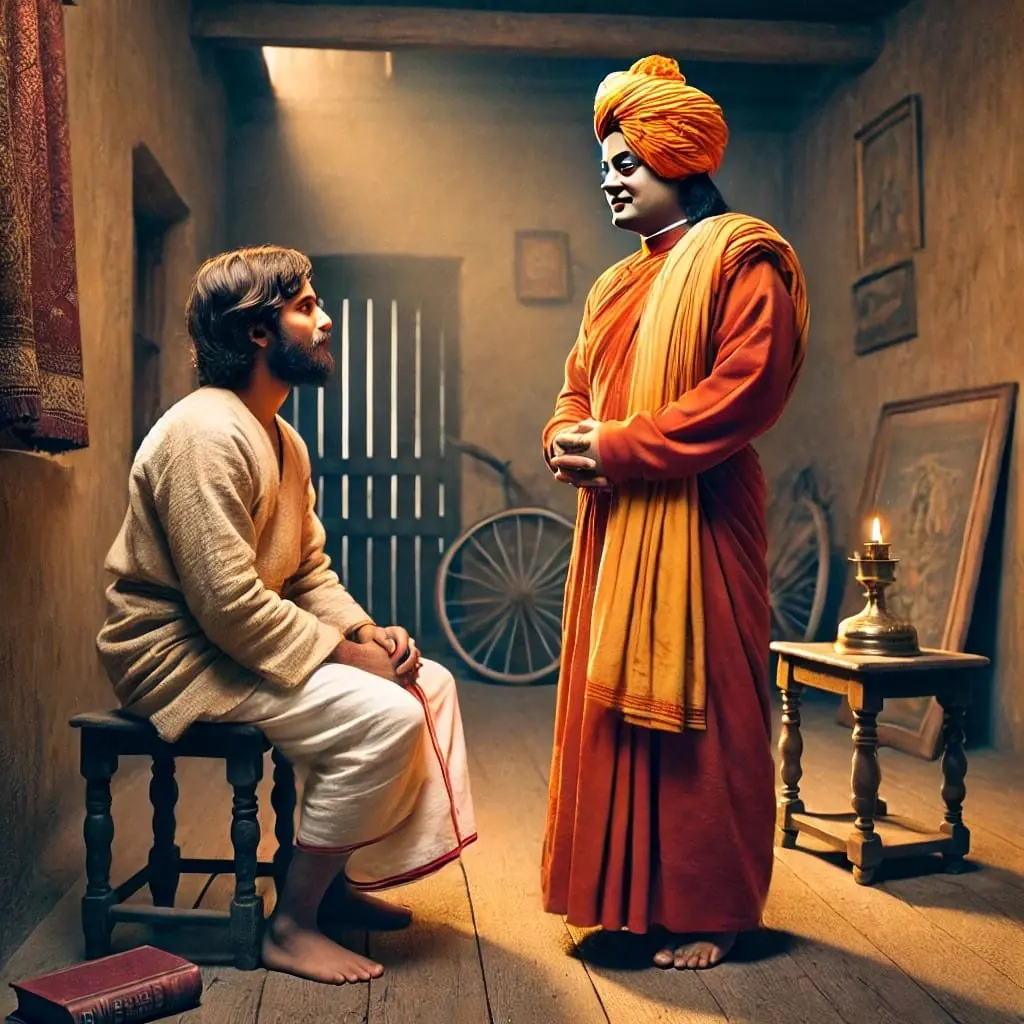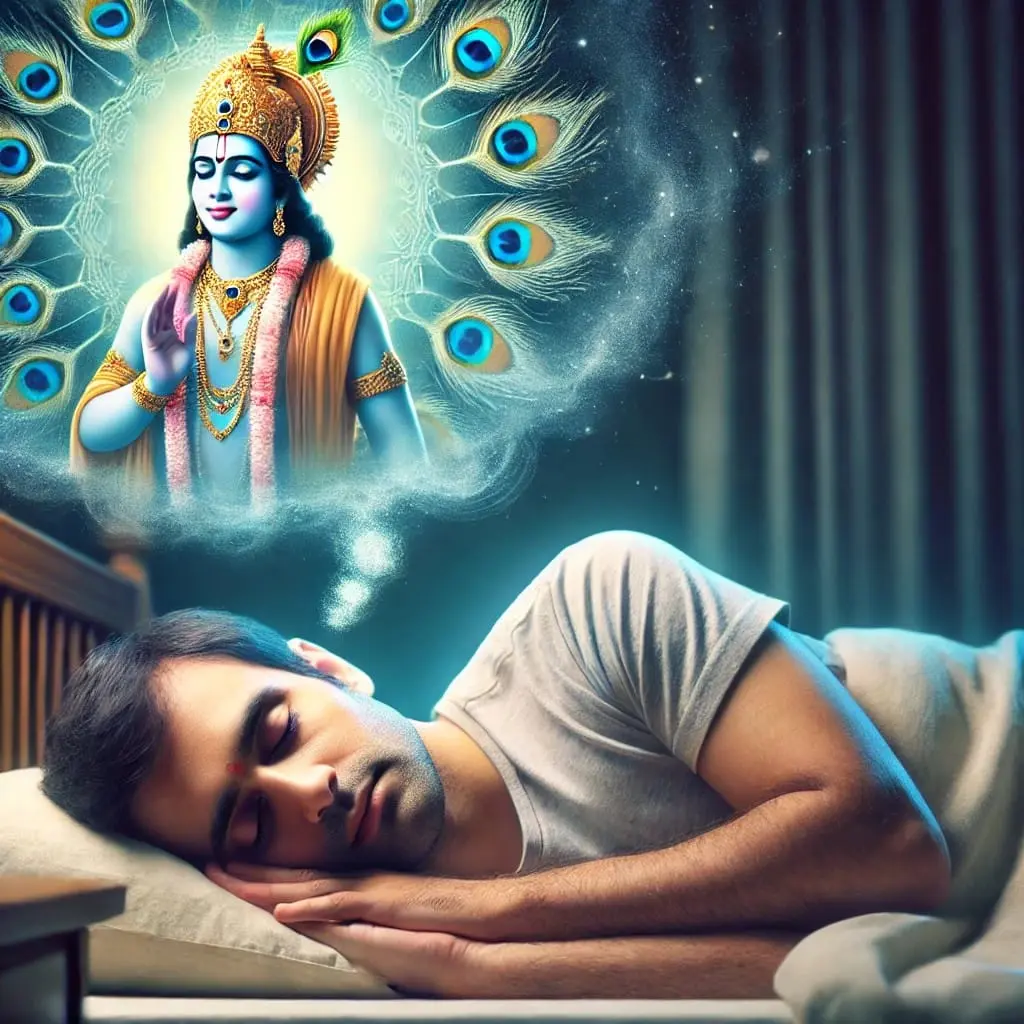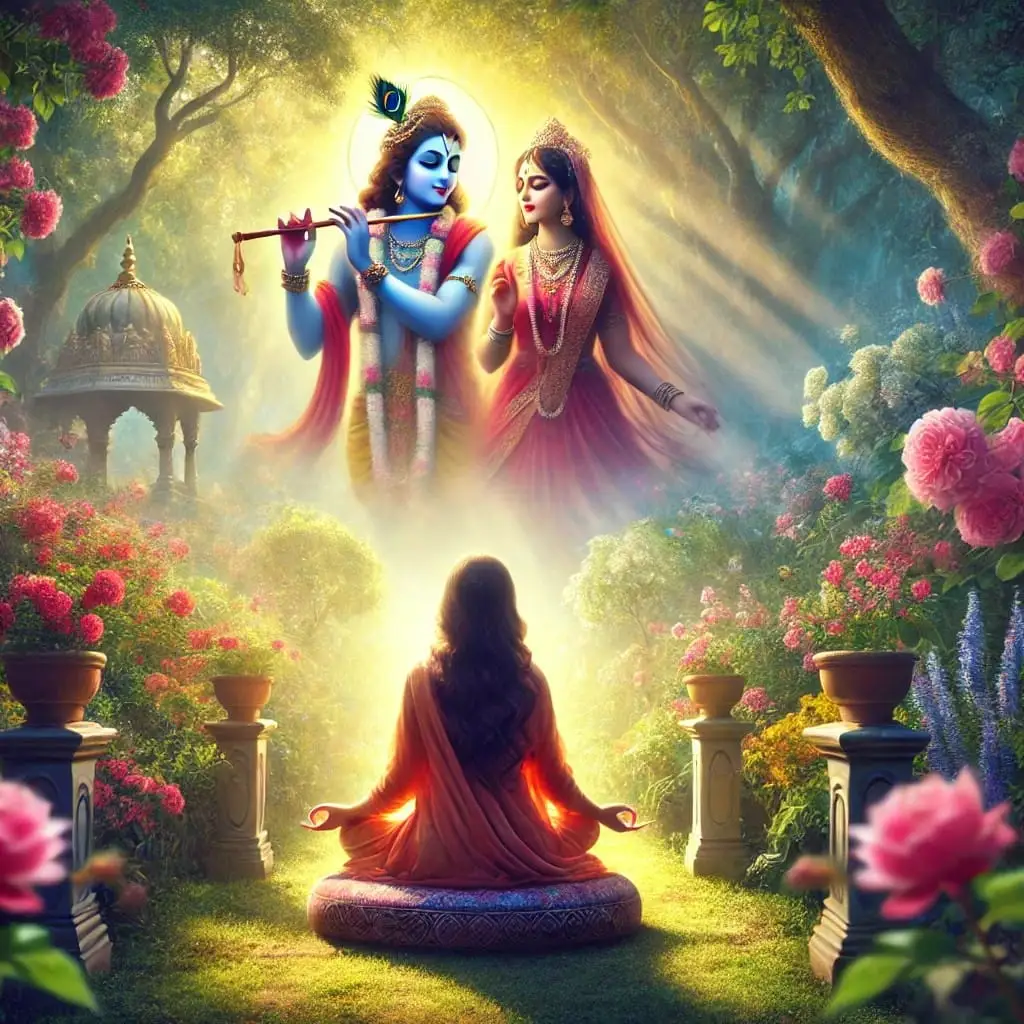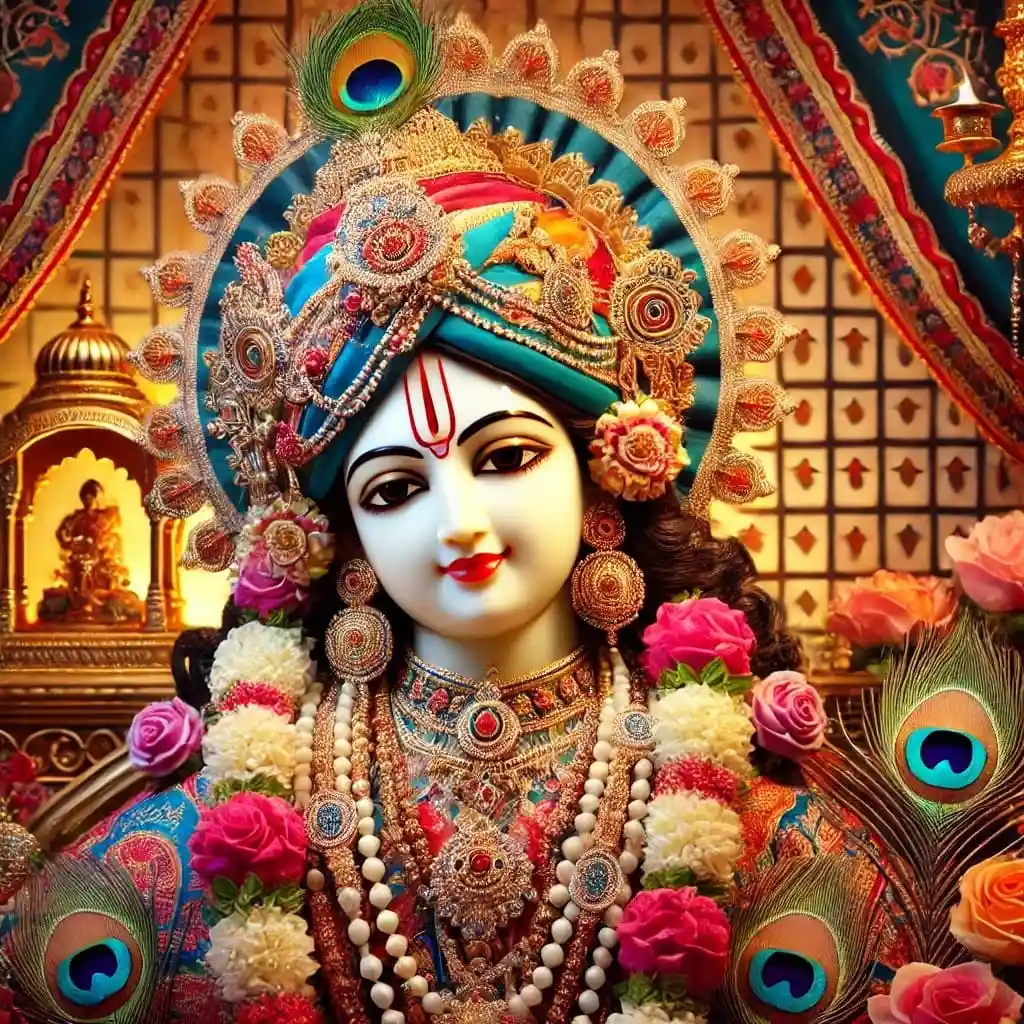The desire to connect with the Divine is a fundamental aspect of the human spiritual journey. While the understanding that the Supreme is all-pervading and resides within us is profound, many seek a more tangible form of connection.
Deity worship is a central practice in Hinduism and other spiritual traditions. It involves the veneration of physical representations of the Divine. This blog explores the powerful practice of deity worship and its significance in fostering a deep devotional relationship with the Divine.
Practical Aspects of Deity Worship
Establishing a Connection
Deity worship provides a framework for establishing a deeper connection with the Divine. Temples worldwide house deities made from various materials, serving as focal points for worship. The act of performing puja, offering food, and chanting prayers creates an intimate atmosphere where devotees can express their love and devotion.
A poignant example is that of a blind devotee who traveled three kilometers daily to visit the temple of Shree Krishna. When questioned about his long journey, he simply stated, “Though I cannot see Him, He can see me.” This illustrates that true devotion transcends physical sight; it is about the heartfelt connection established through faith and love.

Simulating Divine Service
The practice of deity worship also prepares devotees for serving the Divine in higher realms. Just as astronauts train in simulators before embarking on space missions, devotees practice their spiritual duties with deities as a precursor to serving the Divine in the spiritual abode. This act of devotion creates a sense of familiarity and comfort when interacting with the Divine.
Cultivating Genuine Devotion
External rituals are meant to cultivate internal devotion. The deity should be treated with the same care and love as one would treat a dear relative. It's not about the material form but about the devotion it inspires and the divine presence it represents.
Ramakrishna Paramahans emphasized the importance of genuine devotion, encouraging his followers to recognize the deity as the Lord himself. When a controversy arose in the community about replacing a worn-out deity at the Shree Krishna Temple, he compared it to discarding a sick relative instead of caring for them. He urged the community to repair the deity, highlighting that it embodies the divine sentiments they have nurtured. This resolution reinforced the significance of deity worship in Hinduism, underscoring the living connection between devotees and their beloved Lord.
The Emotional Connection in Deity Worship
The heart longs to connect with the Divine, to see Him, to touch Him, and to offer Him love through various acts of devotion. Just as individuals create emotional connections to loved ones, they long to form similar bonds with deities, who embody the divine presence. The story of Swami Vivekananda in Alwar highlights the emotional aspect of deity worship in various traditions.
Mangal Singh's Doubts
In 1891, Swami Vivekananda traveled across Bharatvarsh before his landmark visit to the United States. During this journey, he stayed in Alwar with Mangal Singh, the king who had been educated in modern English ways. Mangal Singh questioned the validity of traditional Hindu practices, particularly deity worship, influenced by his modern education.
The Incident with the Photograph
During his stay, Swami Vivekananda noticed a picture of Mangal Singh’s father on the wall. He provocatively asked a servant to take it down and began to stomp on it. This action shocked Mangal Singh, who was furious and on the verge of striking Swamiji.

In response to Mangal Singh's outrage, Swami Vivekananda asked why he was upset, pointing out that it was merely a piece of paper. He explained that the feelings associated with the image stemmed from Mangal Singh's sentiments. He then drew a parallel between this and the worship of deities.
Swami Vivekananda's Insight on Devotion
Swami Vivekananda emphasized that while Mangal Singh’s father was unaware of the photograph, a deity is conscious of the love and devotion offered by worshippers. He argued that the supreme being is present everywhere, including in the deity forms, and that the true essence of worship lies in the devotion itself, not in the material representation.
The Significance of Intent in Deity Worship
One of the most crucial elements of deity worship is the intention behind the act. The purity of a devotee's heart is what truly brings the deity to life. The ancient scripture states that the Divine is not inherently found in stone or wood but in the loving heart of the devotee. This principle underscores the idea that the Supreme is fully aware of the feelings and sentiments held by spiritual seekers. The story of Shrinathji and Madhavendra Puri inspires and reassures devotees that their acts of love and service do not go unnoticed by the Divine.
The Divine Revelation
The deity, Shrinathji was buried beneath the Govardhan hill. In the 15th century, Shree Krishna appeared in the dream of the devotee, Madhavendra Puri, instructing him to excavate the deity and begin worship. Gathering the locals, Madhavendra Puri successfully unearthed Shrinathji, bathing him with immense quantities of water and offering various rituals for two years.

The Quest for Sandalwood
After two years, Shree Krishna visited Madhavendra Puri in another dream, expressing discomfort from the heat and requesting sandalwood paste for relief. He revealed that the sandalwood could be found in Jagannath Puri. During his journey, Madhavendra Puri stayed in Remuna, where he observed a popular temple offering of kheer to Gopinath ji. Madhavendra Puri wished to taste the kheer being offered so he could replicate it for Shrinathji, but he quickly reprimanded himself for wanting it before the Lord had eaten, feeling deep remorse for his perceived selfishness. Shree Krishna recognized Madhavendra Puri’s pure intentions.
The Blessing of Gopinathji
That night, Gopinathji appeared in the high priest's dream, instructing him to give Madhavendra Puri a pot of kheer hidden behind Gopinathji’s outfit. The priest found the pot and announced Madhavendra Puri’s name in the marketplace. Madhavendra Puri joyfully accepted the kheer, savoring it and keeping the pot's clay as a memento. To avoid attention, he left the area, procured the sandalwood, and returned to the Gopinath Mandir. There, he learned through another dream that Gopinathji and Shrinathji were manifestations of the same Divine essence. He applied sandalwood to Gopinathji and both forms of Krishna received it. He returned home empty-handed.

The Ultimate Goal of Deity Worship
While deity worship provides a powerful means of connecting with the Divine, it is not the ultimate goal of spiritual practice. Rather, it is a stepping stone towards a higher realization. As one progresses on the spiritual path, the goal is to see the Divine not just in the deity, but in all of creation.
The more advanced form of deity worship is mental worship or "Roop Dhyan" meditation. In this practice, the devotee installs the deity in their heart and carries it with them always. This internalization of deity worship allows for a constant connection with the Divine, transcending the limitations of physical time and space. Immerse yourself in devotion using Swami Mukundananda's roop dhyan meditation videos.

FAQs
What is deity worship?
Deity worship is the practice of venerating physical representations of the Divine. It allows devotees to express their love and devotion through tangible forms.
How does intention affect deity worship?
The purity of intention in deity worship is crucial. It is the emotional connection and sincere desire to serve that bring the deity to life and allow for reciprocal love from the Divine.
Why are deities made from materials like stone or wood?
Deities are crafted from various materials to serve as focal points for worship. These physical forms help devotees engage with the Divine in a more personal and accessible way.
Can God be present in a deity?
Yes, God can manifest in the deity, allowing devotees to connect with the Supreme while recognizing that the Divine is also present everywhere.
How can one practice deity worship in daily life?
One can practice deity worship by setting up a small altar at home, offering prayers, lighting incense, and making offerings of food or flowers to connect with the Divine.

